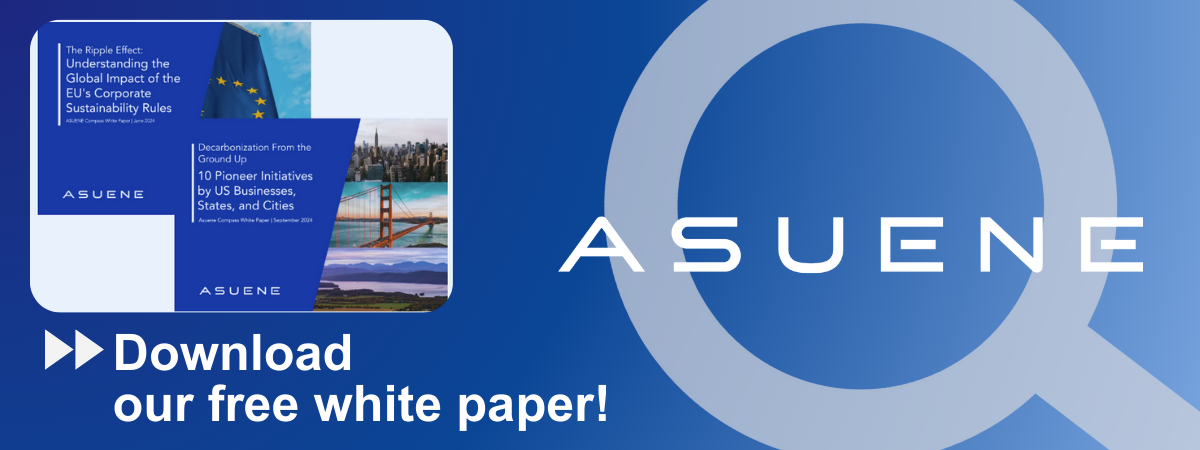- Article Summary
-
Overview
As global environmental pressures intensify, the integration of Nature Positive goals into supply chain management is emerging as a critical business imperative. Nature Positive strategies aim not only to minimize harm to ecosystems but to actively restore and regenerate biodiversity. For companies with complex global supply chains particularly in sectors like food, fashion, consumer goods, and construction, these goals demand a complete rethinking of procurement, production, and value chain collaboration.
This article explores the motivations, frameworks, and practical pathways for embedding Nature Positive principles throughout supply chains, highlighting regulatory, financial, and reputational drivers shaping this transformation.
Why Supply Chains Matter in the Nature Positive Transition
More than 90% of a company’s biodiversity impacts occur outside its direct operations; primarily within its supply chain. From agricultural land use to water extraction and material sourcing, supply chains are hotspots for nature loss. Yet, they also present the greatest opportunities for restoration, innovation, and circularity.
Key reasons for integrating Nature Positive goals into supply chains include:
- Regulatory Compliance: The EU Corporate Sustainability Due Diligence Directive (CSDDD) and CSRD require biodiversity risk assessments and traceability.
- Investor Expectations: Nature-related disclosures, especially under the Taskforce on Nature-related Financial Disclosures (TNFD), increasingly demand supply chain visibility.
- Operational Resilience: Healthy ecosystems support long-term productivity and reduce risk exposure from climate shocks and resource scarcity.
- Brand Trust: Consumers are rewarding companies that demonstrate regenerative sourcing and land stewardship.
Building Blocks of a Nature Positive Supply Chain
To align with Nature Positive goals, companies must address both upstream and downstream impacts using a comprehensive strategy. Key building blocks include:
1. Traceability and Risk Mapping
Companies must achieve granular visibility into where and how raw materials are produced. Tools like satellite imagery, geospatial mapping, and supplier engagement platforms enable the identification of biodiversity hotspots and high-impact zones.
2. Biodiversity Impact Assessments
Conducting nature-related risk and opportunity assessments across the supply chain helps prioritize interventions. This includes habitat conversion, water use, and soil degradation analyses in alignment with TNFD and SBTN (Science Based Targets Network).
3. Regenerative Sourcing Practices
Transitioning from extractive to regenerative agricultural and forestry practices is central to building a Nature Positive supply chain. This transition involves adopting cover cropping and no-till farming techniques that protect and rebuild soil structure, thereby enhancing soil fertility and carbon sequestration. It also includes implementing agroforestry systems and mixed cropping approaches that diversify production landscapes, support wildlife corridors, and stabilize local ecosystems. In addition, wetland and peatland restoration efforts play a critical role in water regulation, carbon capture, and habitat regeneration. Collectively, these practices restore ecosystem functions, enhance biodiversity, and improve the long-term resilience of supply networks..
4. Supplier Collaboration and Incentives
Engaging suppliers through long-term contracts, co-investment in training, and outcome-based incentives is essential. Leading companies are helping producers shift to regenerative models by de-risking transitions and offering technical support.
5. Circularity and Resource Efficiency
Nature Positive supply chains prioritize material efficiency, waste reduction, and product circularity. This reduces pressure on ecosystems and extends the lifecycle of resources.

Real-World Examples of Nature Positive Supply Chains
Unilever: Piloting regenerative agriculture in its supply chain to meet biodiversity and climate targets. As part of its Climate & Nature Fund, Unilever has allocated €1 billion toward land use projects that support biodiversity restoration, including soil health initiatives and watershed protection in India and Latin America.
AXA: Allocating investment portfolios toward nature-positive infrastructure and issuing TNFD-aligned disclosures. The AXA Climate initiative launched a dedicated Natural Capital Strategy that invests in blue economy projects, rewilding funds, and biodiversity indexes, while also co-developing methodologies to quantify nature-related financial risks.
Nestlé: Committing to 20% sourcing from regenerative farms by 2025, integrating nature into supplier contracts. Their Soil Health Program includes biodiversity monitoring in coffee and dairy supply chains, and the company collaborates with farmers on reducing pesticide use and restoring pollinator habitats.
Finance Sector: The Natural Capital Finance Alliance and banks across Europe are embedding nature-related risk into credit assessments. HSBC and Rabobank, for example, are piloting tools that map biodiversity hotspots in their lending portfolios and adjusting loan terms based on regenerative land management practices.
Conclusion
Integrating Nature Positive goals into supply chains is not just about ethical sourcing—it is a strategic imperative for future-proofing businesses. The shift requires systemic collaboration, advanced data, and an evolving mindset that sees nature as a core stakeholder. Companies that act decisively today will not only meet emerging regulatory and investor expectations but also gain long-term resilience, consumer trust, and competitive advantage.
As we move toward 2030 biodiversity targets, Nature Positive supply chains will be at the heart of credible corporate sustainability and climate strategies.
Why Work with ASUENE Inc.?
Asuene is a key player in carbon accounting, offering a comprehensive platform that measures, reduces, and reports emissions, including Scope 1-3. Asuene serves over 10,000 clients worldwide, providing an all-in-one solution that integrates GHG accounting, ESG supply chain management, a Carbon Credit exchange platform, and third-party verification.
ASUENE supports companies in achieving net-zero goals through advanced technology, consulting services, and an extensive network.





